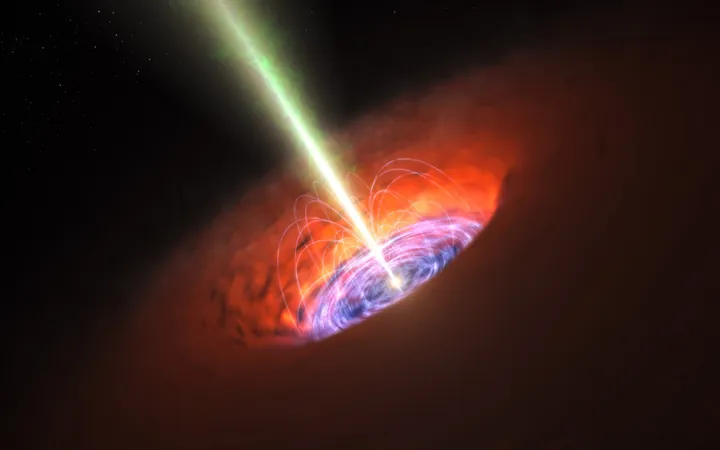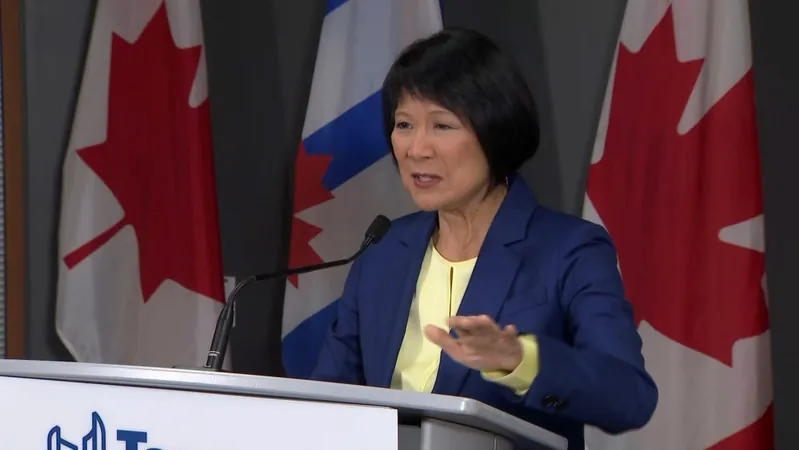
NASA's EMIT Mission Expands Horizons to Tackle Climate Challenges and Agricultural Innovations!
2024-11-14
Author: William
NASA's groundbreaking Earth Surface Mineral Dust Source Investigation (EMIT) mission, operational from the International Space Station since July 2022, is entering a transformative phase after a mission extension this year. Initially focused on mapping minerals in desert regions to understand the cooling and heating effects of dust on our climate, the EMIT instrument has now broadened its scope significantly.
Beyond just analyzing desert dust, EMIT is now identifying sources of greenhouse gas emissions, including major contributors such as landfills and fossil fuel infrastructure. This expanded capability allows scientists to delve deeper into urgent environmental issues across various ecosystems, from agriculture to hydrology and climate science.
Unveiling New Scientific Frontiers
The EMIT mission operates using sophisticated imaging spectrometers, which separate visible and infrared light into hundreds of wavelengths—akin to Newton's prism experiments in 1672 that revealed light as a spectrum of colors. According to Dana Chadwick, EMIT's applications lead at NASA's Jet Propulsion Laboratory, "This incredible instrument provides data essential for addressing pressing questions on our planet," thanks to breakthroughs in optics, physics, and chemistry.
In its extended mission, EMIT will power 16 new projects under NASA's Research Opportunities in Space and Earth Science (ROSES) program. Collaborations include the U.S. Geological Survey (USGS) and the U.S. Department of Agriculture's Agricultural Research Service (USDA), who are investigating how EMIT can evaluate climate-smart agricultural practices like winter cover crops and conservation tillage. These practices play a crucial role in protecting cropland and managing nitrogen levels, which can significantly impact food security.
Enhancing Agricultural Practices
By harnessing EMIT’s data-gathering capabilities, researchers can assess plant distributions and health, enabling agricultural agencies to promote sustainable farming methods. Jyoti Jennewein from the USDA highlighted that “We're adding more accuracy and reducing error on the measurements we supply to end users,” revealing the mission's potential for helping farmers optimize their operations.
Additionally, insights from these analyses will inform NASA's upcoming Surface Biology and Geology-Visible Shortwave Infrared mission, which will allow for more frequent and detailed observations of Earth's land and coastal regions.
Snowmelt Insights for Resource Management
EMIT's new capabilities will also assist in refining snowmelt estimates—critical for water management in regions like California, where meltwater is vital for agriculture. The instrument will measure the albedo, or reflectivity, of snow, providing data that can help predict melt rates. This insight is crucial as changing climate patterns impact water availability.
Understanding Dust's Dual Climate Role
Moreover, the mission continues to investigate the climate consequences of airborne dust, which can have both warming and cooling effects. Researchers are striving to determine if the presence of darker, iron-rich dust generally heats the atmosphere, while lighter, clay-rich particles may contribute to cooling. Natalie Mahowald, the mission's deputy principal investigator, states, "The EMIT mission is giving us lab-quality results, everywhere we need to know," indicating its potential for refining Earth system models in the context of global warming.
Spotlight on Greenhouse Gas Monitoring
EMIT remains focused on detecting point-source emissions of carbon dioxide and methane—the primary culprits of climate change. The team is refining software for more effective identification of greenhouse gas plumes and is making strides with machine-learning automation to streamline data processing. In alignment with NASA's commitment to open science, this information is being shared publicly, enhancing collaboration across various sectors.
Andrew Thorpe, the JPL research technologist leading the efforts on greenhouse gases, emphasized that “Making this work publicly accessible has fundamentally pushed the science of measuring point-source emissions forward,” showcasing the mission's impact on environmental science.
As EMIT ventures into this new phase, the breadth of its findings is set to reshape our understanding of climate dynamics and agricultural sustainability—an exciting prospect for researchers and policymakers alike! Stay tuned as we watch the vital contributions of the EMIT mission unfold!









 Brasil (PT)
Brasil (PT)
 Canada (EN)
Canada (EN)
 Chile (ES)
Chile (ES)
 España (ES)
España (ES)
 France (FR)
France (FR)
 Hong Kong (EN)
Hong Kong (EN)
 Italia (IT)
Italia (IT)
 日本 (JA)
日本 (JA)
 Magyarország (HU)
Magyarország (HU)
 Norge (NO)
Norge (NO)
 Polska (PL)
Polska (PL)
 Schweiz (DE)
Schweiz (DE)
 Singapore (EN)
Singapore (EN)
 Sverige (SV)
Sverige (SV)
 Suomi (FI)
Suomi (FI)
 Türkiye (TR)
Türkiye (TR)